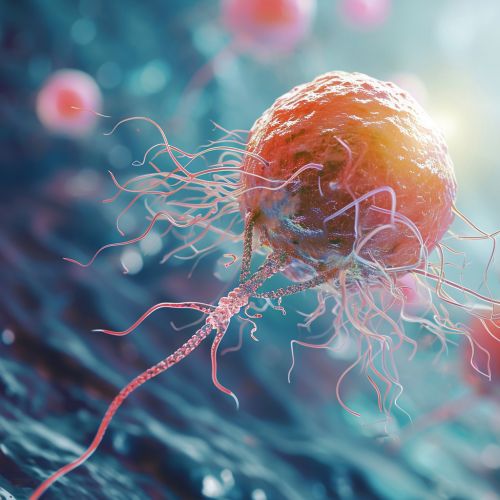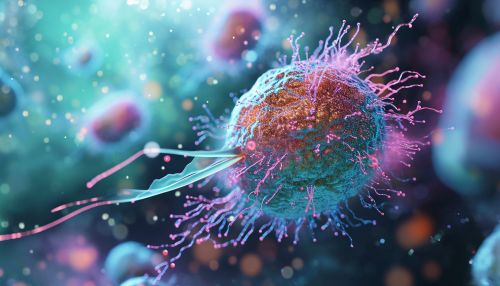Eukaryotic flagellum
Introduction
The eukaryotic flagellum is a complex cellular structure found in many eukaryotic organisms. It is a whip-like appendage that protrudes from the cell body and plays a crucial role in locomotion and sensory functions. The eukaryotic flagellum is distinct from its counterpart in prokaryotic organisms, both in structure and function.


Structure
The eukaryotic flagellum is composed of a bundle of nine peripheral microtubule doublets surrounding two central microtubules. This arrangement is often referred to as the "9+2" structure. The microtubules are composed of the protein tubulin, and are connected by various proteins, including nexin links and radial spokes.
The base of the flagellum, known as the basal body, is anchored in the cell's cytoplasm. The basal body is structurally similar to a centriole, with a "9+0" arrangement of microtubule triplets. The basal body serves as a nucleation site for the growth of the flagellar microtubules.
Function
The primary function of the eukaryotic flagellum is locomotion. The flagellum moves in a wave-like manner, propelling the cell through its environment. This is particularly important for single-celled organisms such as protozoa, which rely on flagellar movement for survival.
In addition to locomotion, the eukaryotic flagellum also plays a role in sensory functions. The flagellum can sense changes in the environment, such as temperature, pH, and chemical gradients, and transmit this information to the cell. This sensory function is crucial for many processes, including chemotaxis (movement in response to chemical gradients), thermotaxis (movement in response to temperature gradients), and phototaxis (movement in response to light).
Evolution
The evolution of the eukaryotic flagellum is a topic of ongoing research. It is believed that the flagellum evolved from a structure known as the undulipodium, which is found in some early-diverging eukaryotes. The undulipodium is structurally similar to the flagellum, but lacks the central pair of microtubules.
The evolution of the flagellum is closely tied to the evolution of the cilium, a similar cellular structure. Both the flagellum and cilium share a common origin, and many of the proteins involved in their assembly and function are conserved between the two structures.
